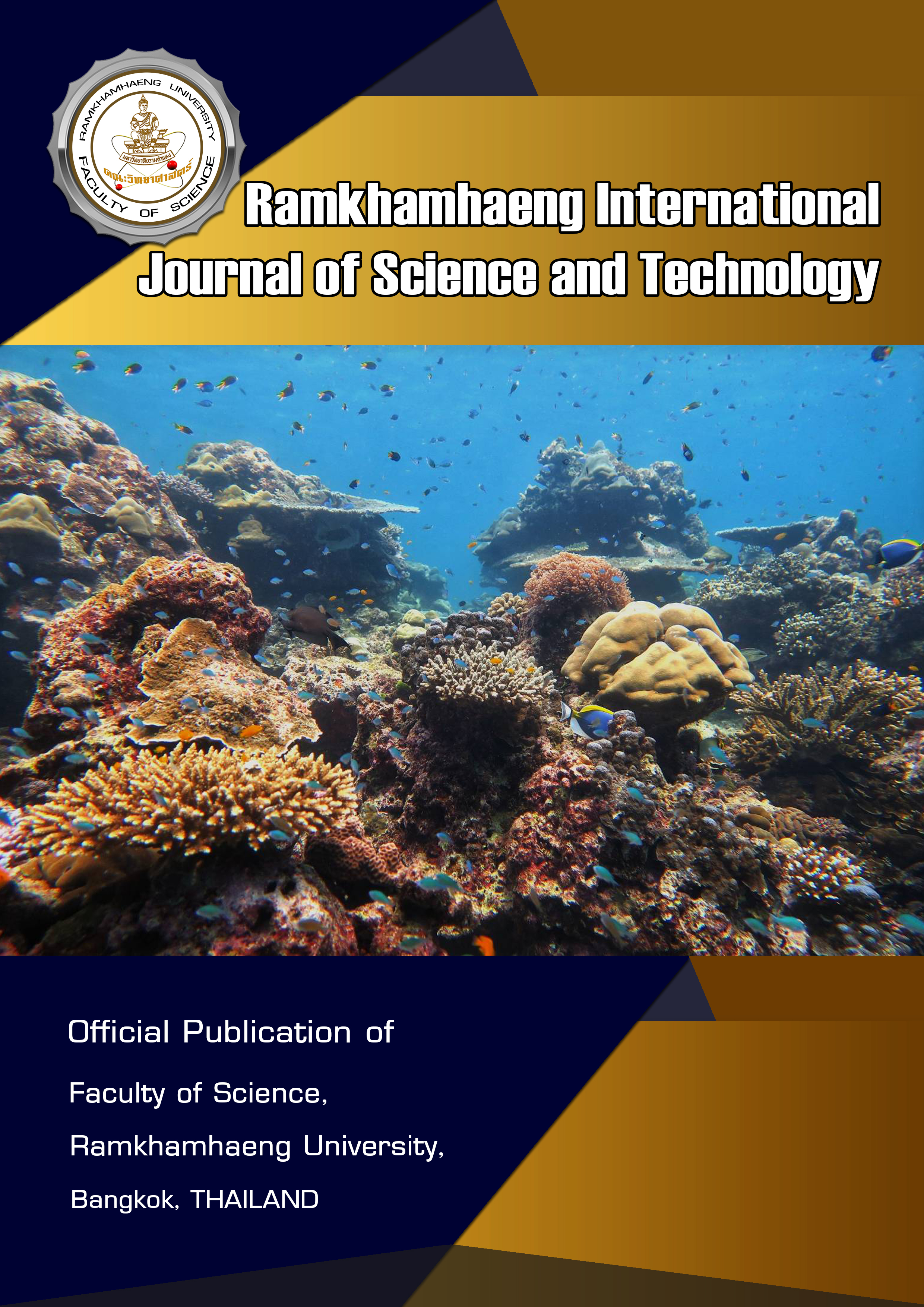Hydraulic Condition of Up-Flow Thermophilic Septic Tank (UTST) for Treatment of Blackwater
Keywords:
Hydraulic Condition, Up-Flow Thermophilic Septic Tank, HRT, BlackwaterAbstract
The treatment performance of septic tanks can be affected by many factors. Hydraulic conditions can affect the treatment performance of septic tanks. The characteristics of hydraulic patterns such as residence time, dead zone, short circuiting and mixing can influence on the reactor performance. According to Stanmatelatou et al. (2004), the microorganisms were disrupted to produce biogas production that resulted from the inappropriate mixing in the sedimentation tank. Average COD removal efficiencies of the laboratory-scale UTST operating at 8, 16, 24 and 32 h at the temperature of 50 °C were 53, 67, 77 and 75%, respectively. The effluent BOD5 concentrations of the laboratory-scale UTST were in the same magnitude of about 190- 300 mg/L. The result showed that the UTST operating at HRT of 24 h could remove COD and BOD5 better than those unit operating at 8, 16 and 32 h. The intermittent feeding mode was conducted with HRT of 24h to compare the treatment performance of different mode feeding. The experimental results showed that intermittent feeding mode could remove COD and BOD5 better than continuous feeding. Average COD and BOD5 removal efficiencies of intermittent feeding at 24h HRT were 87 and 79%, respectively with significant differences (p<0.05). The hydraulic condition in the UTST at optimum HRT of 24h was studied. NaCl was used as a tracer chemical with a single shot impulse. The normalized resident time distribution (RTD) curves resulting from the results of tracer study indicated that the dispersion numbers of continuous and intermittent feeding were 0.203 and 0.326, respectively indicating the reactors approaching the completed-mix pattern.
References
Catherine DG, Douglas WM, David J (1995) Effect of heat on the sterilization of artificially contaminated water. Journal of Travel Medicine, 3(1).
Eamrat R (2014) Hydraulic evaluation and performance of conventional septic tank under thermophilic condition. (Master Thesis No. EV 14-11, Asian Institute of Technology, 2014). Bangkok: Asian Institute of Technology
Edward L, Thackston F, Douglas S, Paul R (1987) Residence time distributions of shallow basins. The Journal of the Environment Engineering, 113, 1319-1332.
Farajzadehha S, Mirbagheri SA, Farajzadehha S, Shayegan J (2012) Lab scale study of HRT and OLR optimization in UASB reactor for pretreating fortified wastewater in various operational temperatures. APCBEE Procedia, 1, 90-95.
Kadlec RH, Wallace SD (2009) Treatment Wetlands. (2nd edition), Boca Raton, Florida: CRC Press.
Koottatep T, Eamrat R, Pussayanavin T, Polprasert C (2014) Hydraulic evaluation and performance of on-site sanitation systems in central Thailand. Environmental Engineering Research, 19(3), 269-274.
Levenspiel O (1999) Chemical reaction engineering (3rd edition). New York, U.S.A.: John Wiley and Sons.
Luostarinen S A, Rintala JA (2005) Anaerobic on-site treatment of blackwater and dairy parlour wastewater in UASB-septic tank at low temperature. Water Resource, 39(23), 436-448.
Luostarinen SA, Rintala JA (2007) Anaerobic on-site treatment of kitchen waste in combination with blackwater in UASB-septic tanks at low temperature. Bioresource Technology, 98, 1734-1740.
Metcalf, Eddy (2014) Wastewater Engineering: Treatment and Resource Recovery. 5th Edition, McGraw-Hill, New York
.
Prapasriket P (2018) Investigation of the Treatment Performance of Up-Flow Thermophilic Septic Tank for Treatment of Blackwater. (Master Dissertation No EV-18-23, Asian Institute of Technology, 2018). Bangkok: Asian Institute of Technology
Pussayanavin T, Koottatep T, Eamrat R, Polprasert C (2014) Enhanced sludge reduction in septic tanks by increasing temperature. Journal of Environmental Science and Health, Part A, 50(1), 81-89.
Sarathai Y, Koottatep T, Morel A (2010) Hydraulic characteristics of an anaerobic baffled reactor as onsite wastewater treatment system. The Journal of the Environmental Science, 22(9), 1319-1326.
Vrieze JD, Verstraete W, Boon N (2013) Repeated pulse feeding induces functional stability in anaerobic digestion. Microbial technology, 6(4).414-424
Stamatelatou K, Skiadas IV, Lyberatos G (2004) On the behavior of the periodic anaerobic baed reactor (PABR) during the transition from carbohydrate to proteinbased feedings. The journal of the Bioresource Technology, 92, 321–326.
Zeeman G, Lettinga G (1999) The role of anaerobic digestion of domestic sewage in closing the water and nutrient cycle at community level. Water Science & Technology, 39(5), 187-194
Downloads
Published
Issue
Section
License
Copyright Notice: a copyright on any article in the published journal is retained by the Ramkhamhaeng International Journal of Science and Technology. Readers or Users grant the right to use of the Article contained in the Content in accordance with the Creative Commons CC BY-NC-ND license and the Data contained in the Content in accordance with the Creative Commons CC BY-NC-ND.



